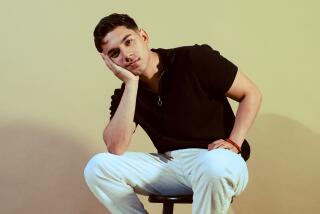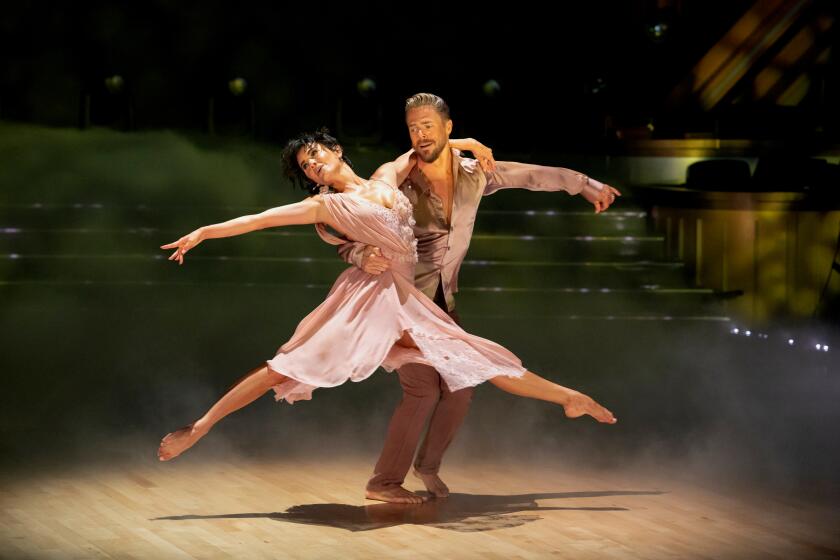An Impulse for Genius
We first met Manuel Alvarez Bravo on a humid June afternoon at his studio in the historic Coyoacan district of Mexico City. Though we had not been to this area of Mexicoâs capital before, the cobblestone streets of Bravoâs neighborhood looked familiar. Once inside his âstudio,â we immediately understood why. It looks very much like the streets and neighborhoods in his photographs: his work space is merely an extension of the city around him, separated only by a door for privacy.
Bravo greets us at that door. He has the shuffling gate of someone nearing his 100th birthday, a small man whose old clothes hardly suggest heâs one of the giants of photography in the 20th century, and the most influential figure of the medium in Mexico. To celebrate Bravoâs 100th birthday Feb. 4, 2002, the J. Paul Getty Museum is showing a collection of his work from Nov. 13 through Feb. 17. RoseGallery at the Bergamot Station Arts Center in Santa Monica will feature his work for two months, beginning Feb. 2.
What is your feeling about reaching 100?
I donât think about that at all. Life goes on . . . reaching 100 wonât change anything. Also, I have no worries, I let things happen and go along with them.
Looking back over the century, how do you regard your work?
I feel Iâve done my part. I think I contributed something, in whatever way I did. Iâm at peace in that respect.
Growing up in this historic part of Mexico City, were you aware of the cultural richness that surrounded you?
As a boy, whenever I wouldnât go out with my friends on Sundays, I would go to one of two museums that were very close to where I lived. One museum was the anthropology and history museum, which has pre-Hispanic art. This work is very important to me because of the cultural heritage. The other museum was the San Carlos Museum, which contains European art. How did your exposure to those influences affect your work?
Of course it had a great influence, but one doesnât really know how one receives influences. Itâs like food. You eat it and then it affects you. We are all influenced by what surrounds us culturally, physically, politically. But how that emerges from my work is for others to interpret. When one takes a photograph, one doesnât think about saying anything in particular. One doesnât think about making a statement, but rather of creating something visual which can later bear a meaning that one didnât intend to transmit--depending upon the viewerâs interpretation but not necessarily on the photographerâs.
Many interpreters of your work consider it surrealistic.
Except for a few photographs, I would say my work is more fantasy. Fantasy is totally from the imagination. Surrealism has a bit of reality in it.
Your title âParabola Opticâ (âOptic Parable,â 1931), for the image of the optometristâs office, is intriguing.
The name says it all; things are not like they seem to be, theyâre like a parable. When you stand in front of a window, you see something one way. Then when you go inside, you see itâs the other way around. So thatâs why Iâve printed the image in reverse.
Did you study printing and photography in school?
Actually, no, I taught myself. I had finished school early. I went to work instead.
What type of work did you do?
First I worked at a company that manufactured textiles, and then a year later, at 14, I took up a job in the government as a bureaucrat. I held several positions in the government (from 1916 to 1943).
How were you able to continue your interest in the arts while trying to make a living? Initially, I started getting the knowledge and influence in painting and other art fields because of the interest of some of my friends. One was in fact the nephew of the painter Joaquân Clausell. And then around 1922 the first Picasso book arrived in Mexico. It stirred up my mind. Until that time the only painters I knew were classic painters. Picasso revolutionized my mind.
Enough to pursue becoming a painter?
Yes, at that time I was drawn into painting. But it was very difficult to attend the painting lessons because they were evening classes. I was busy taking other courses at the School of Commerce and Administration. The schedules were incompatible. I thought that photography would be much easier. Eventually I found out that it was more difficult than painting because of the technical complications of the equipment in those days. I used photography magazines as technical guides.
You became acquainted with many well-known photographers, including Andre Breton, Paul Strand, Henri Cartier-Bresson and Tina Modotti from their visits to Mexico.
Iâve been very fortunate to have made the acquaintances of so many great artists, not just photographers, but painters and writers as well. Diego Rivera was a teacher of mine in a way. How he represented Mexican culture in his work had a great influence.
One of your most famous photographs is of his wife, the legendary painter Frida Kahlo, who often worked with Mexican themes but in a very different way.
She was an incredibly strong, persevering woman. She never gave up on life despite her accident [a bus she was riding on was hit by a trolley] and the terrible pain she went through. She never lost her sense of humor and diligence at work . . . an admirable lady indeed. To me her work is highly interesting, particularly her being married to such a renowned painter with such a different approach and dissimilar ideas about painting and who developed his art so unlike her technically.
Tina Modotti was also a very strong woman. When she left Mexico I took over photographing paintings and murals for an art magazine she was working for called Mexican Folkways. She suggested that you send some of your photographs to Edward Weston.
Yes. Even though by this time she and Edward Weston were separated, she stayed in contact with him. She would show me pictures of his that he would send from San Francisco. At one point, Weston received an invitation, I think from Germany, to put together an exhibition from the American zone. Tina wanted Weston to see my work and wanted him to include it. Unfortunately, it arrived too late. But it was important to me that he had seen my work. I received a letter from Weston saying which images he liked.
What inspires you to shoot?
I just get the will to do it. For example, the photograph of the worker who was assassinated. (âOberero en Huelga, Asesinado,â 1934--âStriking Worker, Assassinatedâ). He was dead when I arrived. He was the man who had started the strike. I didnât look for an angle. I didnât have any preconceived ideas. I just had an impulse and photographed.
So you donât first visualize a shot?
Not in the sense of planning a photograph in advance. I work by impulse. No philosophy. No ideas. Not by the head but by the eyes. Eventually inspiration comes. Instinct is the same as inspiration, and eventually it comes. When I work itâs by impulse.
One of your photographs does seem set up and has a sense of humor to it--the image of Coatlicue and the skeleton in the garden.
On an impulse I casually set up my little mementos. This picture shows the direct influence of my visits to the museums near my house as a youth. Itâs a picture of life and death. They look like theyâre friends.
Yes, yes, yes. Thatâs the way Coatlicue is. This is where the influence of pre-Hispanic art is in my work. We [in Mexico] take death very lightly in the sense that we view death as a natural part of life. This attitude comes from the Aztecs, the Toltecs, the Mayans, all the Indians . . . they led life in a very natural way. They were not scared of death, in fact, death was important. It meant to be reborn.
Some of your work, including âCoatlicueâ and many of your nudes, have been done right here in this courtyard.
It lends itself to it.
Why nudes?
I would say to you, why landscape?
Do you only work with natural light?
I just have one nude photograph with artificial light. The formal studio, with all its electronic equipment, just doesnât allow as much freedom.
You seem to flow with the current of life.
Throughout my life Iâve never pursued anything. I just let things pursue me . . . they just show up. Iâm never after things. Whatever shows up, I take. This is the way Iâve led my life, not just in photography.
More to Read
The biggest entertainment stories
Get our big stories about Hollywood, film, television, music, arts, culture and more right in your inbox as soon as they publish.
You may occasionally receive promotional content from the Los Angeles Times.










